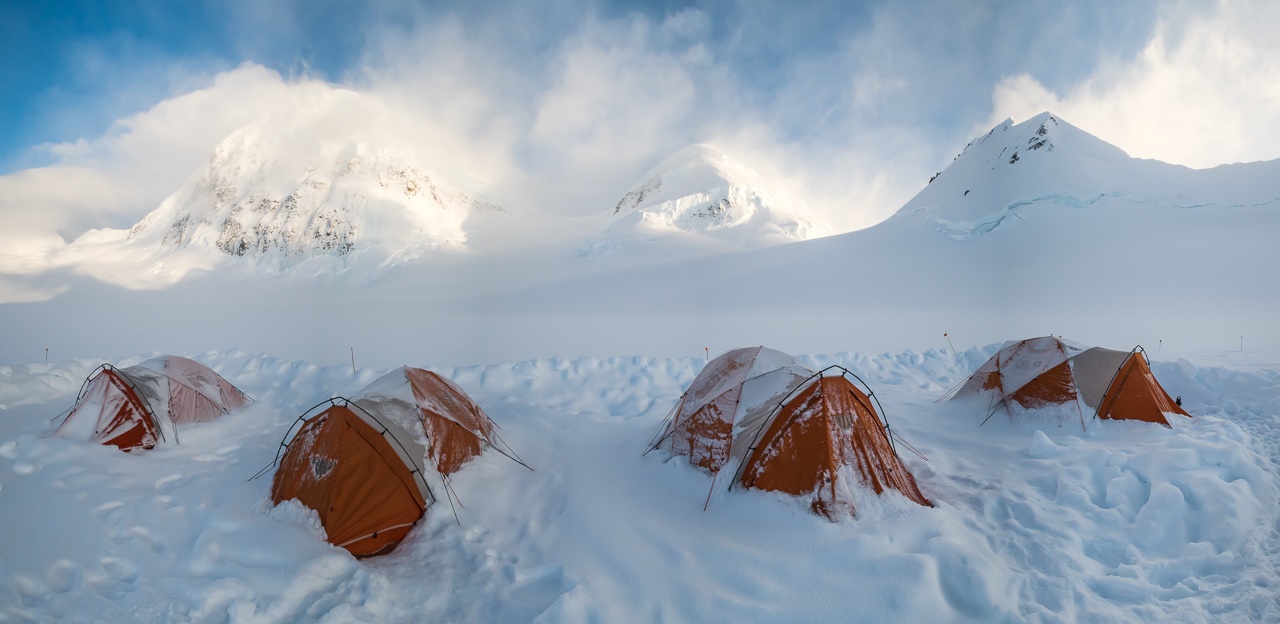By Cmdr. Mark Van Waes, former commanding officer of NOAA Ship Fairweather
Mount Fairweather stands tall above Glacier Bay National Park and Preserve, dominating the skyline for miles around (when weather permits visibility). Only about 12 miles inshore from the Gulf of Alaska and soaring to 15,325 feet, it is one of the highest coastal peaks in the world.

Named for the remote mountain peak, NOAA Ship Fairweather surveys the waters of Alaska and the Pacific Northwest, making maritime commerce safer, contributing to scientific discovery, and locating lost vessels. The ship, commissioned in 1968 and celebrating 50 years of service to the nation this year, is currently hard at work in Alaska’s Arctic waters to ensure safe navigation for increasing traffic in the region.

Though I had only ever seen Mount Fairweather from sea (usually on board either NOAA Ship Rainier or Fairweather), I have been drawn to it for years. Since I summited my first mountain (Mount Rainier in 2007), I’d thought that a trip to climb this remote, seldom-climbed peak would be a worthy adventure. I was fortunate that a series of happenstances occurred that made possible an attempt this May. While NOAA Ship Fairweather was docked for mid-season repairs in Juneau, Alaska, I was able to make my way over to Haines, and from there set out with a team of climbers to make a bid for the peak.

Having endured numerous days’ delay due to weather (Captain Cook must have caught the mountain on a good day when he bestowed its name), early in the morning on Tuesday, May 29, we set out from our high camp at 10,400 feet en route to the summit. At 1:16 p.m. Alaska time and after 10 hours of climbing we were standing atop the mountain. With bright sun and clear blue skies overhead and a layer of clouds below at about 9,000 feet, we marveled at the view of peaks, such as Mount Saint Elias and Mount Logan, visible in the distance. It was, as is the attainment of any mountain summit, both an exhilarating and humbling experience.

The surveyors of NOAA’s predecessor agency, the U.S. Coast and Geodetic Survey, would scale mountains such as these in their work to map the land in which we live. The summit of this mountain forms a corner of the border with British Columbia, and the mountain is the highest point in that Canadian province. Surveying such remote locations to define our nation’s borders was a important part of the work of the hardy folks who served in the U.S. Coast and Geodetic Survey. Though we no longer have the need to do so to the extent that they did in the past, it is interesting and instructive to get an idea of what they had to endure to accomplish the tasks before them.
As a mariner, I had long thought that the vastness of the sea would make anyone feel small. For me, however, it is the mountains that truly help put things in perspective. Their grandeur and ability to inspire awe is unmatched, as is their ability to instill a sense of place. Having spent the majority of my seagoing time aboard the NOAA Ships Rainier and Fairweather, culminating with a command tour aboard Fairweather, climbing these mountains has been a bridge between my time aboard and the history behind the ships. In the fifty years that they have been in service they have been a steady presence in NOAA’s fleet, just as the mountains for which they are named have stood tall above their respective skylines.

